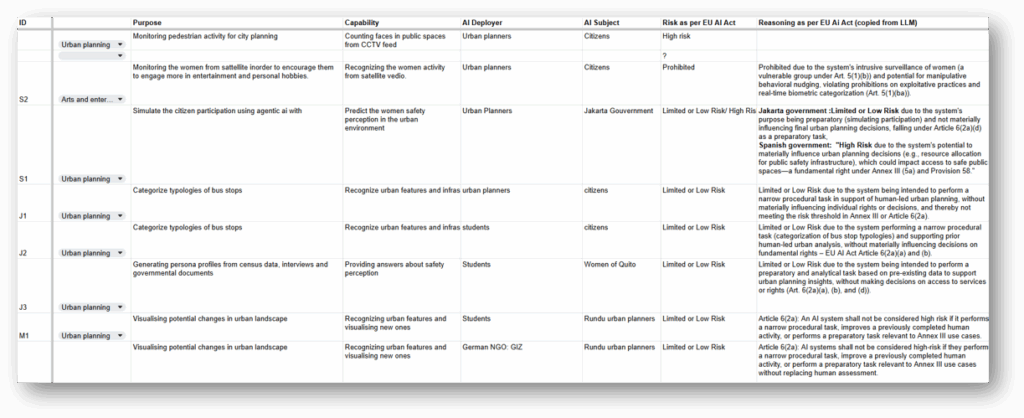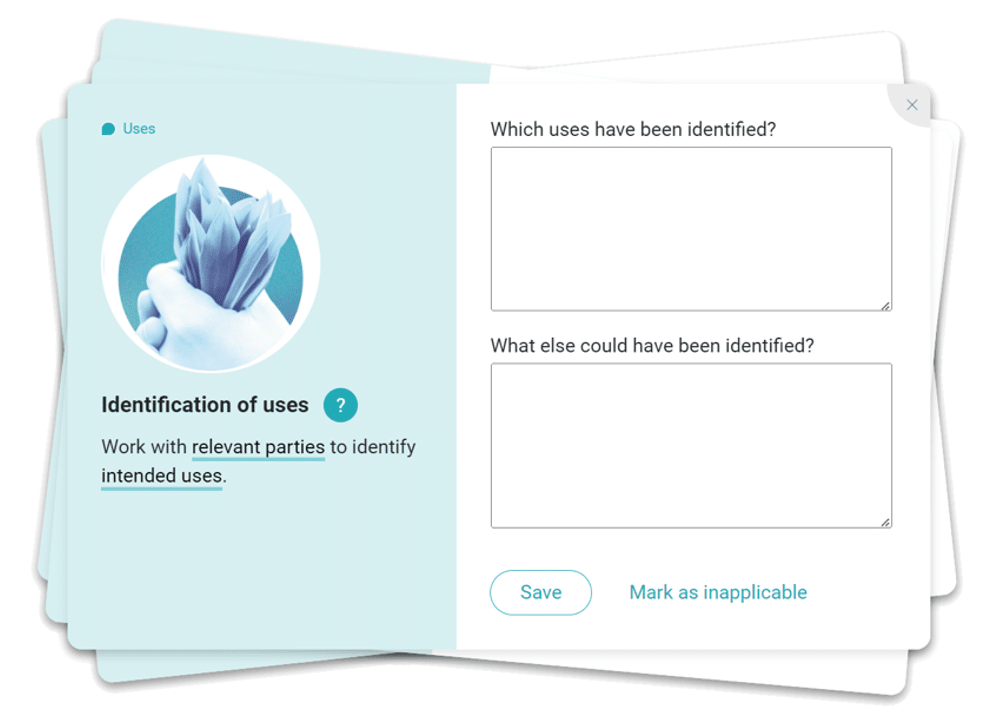As part of the Responsible AI Hackathon, we explored how to critically assess the ethical and societal implications of artificial intelligence (AI) in urban projects. The workshop introduced tools and frameworks to help participants map, evaluate, and reflect on the risks associated with deploying AI systems in urban environments, emphasizing the importance of responsible and context-aware implementation.
A key topic was the European Union’s classification of AI risks, which organizes AI applications into five categories:

- Unacceptable Risk: Includes practices such as social scoring, which are considered inherently harmful and are prohibited.
- High Risk: Covers systems used in sensitive domains like immigration, border control, and employment selection, where the potential for harm is significant.
- Limited Risk: Applies to situations where users are aware that AI is being used.
- Minimal Risk: Includes uses such as spam filtering, with little to no adverse impact.
- No Risk: systems that do not affect health, safety, or fundamental rights may be considered minimal or no risk, though continuous scrutiny is advised.
We also examined a five-component framework for AI risk assessment, which provides a structured way to evaluate AI applications:
- Domain: The sector or context in which the AI system is deployed.
- Purpose: The intended outcome or objective of using the AI system.
- Capability: The technological capacities of the AI that enable it to fulfill its purpose.
- AI Deployer: The entity responsible for implementing and managing the AI system.
- AI Subject: Individuals or groups affected by the AI system and its outputs.
In addition, we were introduced to VAIR (Vocabulary for AI Risks), an open vocabulary designed to support the identification and documentation of AI-related risks. VAIR facilitates knowledge sharing and interoperability across the AI value chain by offering a common semantic framework grounded in the FAIR principles (Findable, Accessible, Interoperable, Reusable). Built upon the AIRO ontology and modeled using SKOS, VAIR allows for structured and standardized risk cataloguing across multiple dimensions.
As part of our exploration, we reviewed an extensive list of domains where AI systems are being developed and deployed, ranging from healthcare, education, public services, and transportation to more sensitive areas like law enforcement, migration, and democratic processes. Notably, urban planning featured prominently as one of the domains with significant societal implications.
Building on this knowledge, we engaged in a group exercise where we analyzed how AI has been used in our own Master’s projects. Interestingly, we used AI itself to evaluate this usage: by submitting project descriptions as prompts to various large language models (LLMs)—including ChatGPT, Gemini, Deepseek, and Claude—we asked each to classify the AI usage based on the EU risk taxonomy. Despite using the same input, the LLMs provided different assessments, prompting a critical group discussion on interpretability, model bias, and the subjective nature of AI outputs.

We also experimented with the AI Design platform by Nokia Bell Labs, which offers a checklist for ensuring AI systems are accurate, fair, and transparent. Depending on the role you identify with—decision-maker/advisor, engineer/researcher, or designer—the platform poses a tailored set of reflective questions. The goal is to prioritize the protection of fundamental rights during each phase of the AI system’s lifecycle, from conception to deployment.

Overall, the hackathon was a valuable exercise in introspection and ethical reflection, reminding us that urban projects are not isolated technological endeavors but interventions with long-lasting, wide-reaching effects. As we increasingly integrate AI into urban systems, we must do so morally, ethically, and with full awareness of the consequences. The intention was not to demonize AI, but to recognize it as a powerful tool—one that must be wielded with responsibility, especially in the context of cities that are home to diverse, interconnected communities.

